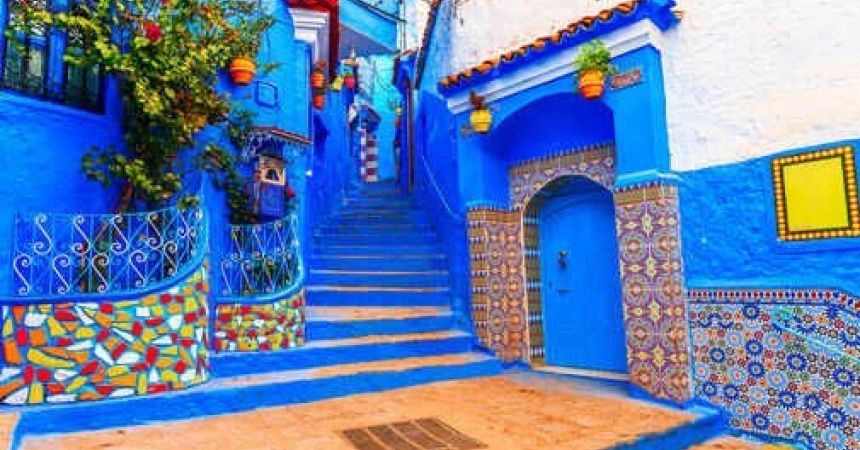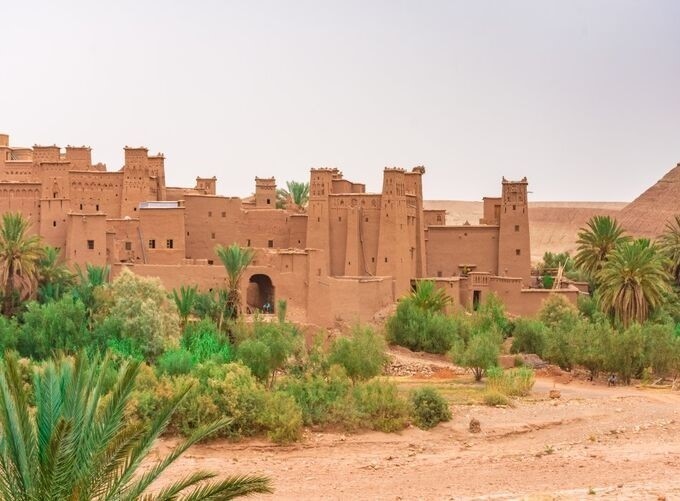
Morocco Travel Guide: Tips and Itineraries
Morocco is a land of contrasts, where ancient traditions and modern influences coexist harmoniously. The country is renowned for its stunning architecture, vibrant markets, diverse landscapes, and warm hospitality. Whether you're exploring the labyrinthine streets of Fes, trekking through the Atlas Mountains, or relaxing on the beaches of Agadir, Morocco promises an immersive and rewarding travel experience.
Top Destinations in Morocco
-
Marrakech: The Red City
Marrakech, known as the "Red City" due to its distinctive red-hued buildings, is one of Morocco's most vibrant and culturally rich cities. It is famous for its bustling medina, stunning palaces, and lively souks.
Must-See Attractions in Marrakech:
- Jemaa el-Fnaa Square: The heart of Marrakech, Jemaa el-Fnaa is a bustling square where you can experience street performers, traditional musicians, and an array of food stalls. The square comes alive in the evenings with storytellers, snake charmers, and vibrant activities.
- Koutoubia Mosque: Admire the Koutoubia Mosque, the largest mosque in Marrakech, known for its impressive minaret and beautiful architecture. Non-Muslims are not allowed inside, but the mosque's exterior is worth seeing.
- Saadian Tombs: Explore the Saadian Tombs, a historic necropolis dating back to the Saadian Dynasty. The intricate tilework and peaceful gardens provide insight into Morocco's royal history.
- Majorelle Garden: Visit the Majorelle Garden, a serene and colorful garden designed by French painter Jacques Majorelle. The garden is known for its vibrant blue buildings, exotic plants, and tranquil atmosphere. Sahara Desert tours
Tips:
- Spend at least 2-3 days in Marrakech to fully explore its attractions and soak in the local atmosphere.
- Be prepared for crowds in the medina and wear comfortable shoes for walking.
- Bargaining is common in the souks, so don’t hesitate to negotiate prices.
-
Fes: The Cultural Capital
Overview:
Fes, Morocco’s cultural and spiritual capital, is known for its well-preserved medieval architecture, ancient medina, and traditional craftsmanship. It offers a glimpse into Morocco’s rich history and heritage.
Must-See Attractions in Casablanca:
- Fes el-Bali: Wander through Fes el-Bali, the oldest part of the city, which is a UNESCO World Heritage Site. The medina is a maze of narrow streets, bustling souks, and historic buildings.
- Bou Inania Madrasa: Visit the Bou Inania Madrasa, an architectural gem and one of the few religious buildings in Morocco open to non-Muslims. The madrasa features stunning tilework, intricate wood carvings, and a serene courtyard.
- Chouara Tannery: Experience the traditional leather tanning process at the Chouara Tannery. The sight of colorful dye pits and the scent of leather are unique aspects of Fes’s artisanal heritage.
- Dar Batha Museum: Explore the Dar Batha Museum, housed in a former palace. The museum showcases Moroccan art and artifacts, including ceramics, textiles, and calligraphy.
Tips:
- Spend 2-3 days in Fes to immerse yourself in its cultural and historical richness.
- Wear comfortable clothing and shoes, as exploring the medina involves a lot of walking.
- Consider hiring a local guide to navigate the medina and learn about its history.
-
Chefchaouen: The Blue City
Overview:
Chefchaouen, often referred to as the "Blue City," is known for its striking blue-painted buildings and picturesque mountain setting. It offers a tranquil escape and is perfect for leisurely exploration.
Must-See Attractions in Chefchaouen:
- Medina: Stroll through Chefchaouen’s medina, where narrow, blue-painted streets create a picturesque and serene atmosphere. The medina is also home to charming shops and cafes.
- Ras Elma: Visit Ras Elma, a natural spring that provides a relaxing spot to enjoy the fresh water and lush surroundings. It’s a popular place for locals and visitors alike.
- Spanish Mosque: Hike up to the Spanish Mosque for panoramic views of Chefchaouen and the surrounding mountains. The mosque itself is a simple structure, but the views are breathtaking.
Tips:
- Spend 1-2 days in Chefchaouen to enjoy its laid-back charm and explore its blue-hued streets.
- Bring a camera to capture the unique colors and beauty of the city.
- Chefchaouen is known for its relaxed atmosphere, so take your time and enjoy the peaceful environment.
-
Casablanca: The Modern Metropolis
Casablanca, Morocco’s largest city, is a modern metropolis known for its business districts, cosmopolitan lifestyle, and impressive architecture. It contrasts with the historic charm of cities like Marrakech and Fes.
Must-See Attractions:
- Hassan II Mosque: Visit the Hassan II Mosque, one of the largest mosques in the world, featuring a stunning minaret and intricate tilework. The mosque’s location on the coast offers spectacular views of the Atlantic Ocean.
- Corniche: Stroll along the Corniche, a seaside promenade with beaches, restaurants, and cafes. It’s a great place to relax and enjoy the coastal scenery.
- Royal Palace: Although the Royal Palace is not open to the public, you can admire its grand architecture from the outside. It’s located in the heart of Casablanca and is an important symbol of the monarchy.
Tips:
- Spend 1-2 days in Casablanca to explore its modern attractions and enjoy its cosmopolitan vibe.
- Use taxis or ride-sharing apps for convenient transportation around the city.
- Casablanca is a business hub, so it’s a great place to experience contemporary Moroccan life.
-
The Sahara Desert: A Journey into the Dunes
The Sahara Desert, one of the world’s largest deserts, offers a dramatic and otherworldly landscape of sand dunes, rocky plateaus, and ancient oases. It’s an ideal destination for adventure seekers and those wanting to experience Morocco’s natural beauty.
Must-See Attractions:
- Erg Chebbi Dunes: Explore the towering Erg Chebbi dunes near Merzouga. A camel trek or 4x4 tour allows you to experience the vast expanse of sand and watch stunning desert sunsets.
- Zagora: Visit the town of Zagora, the gateway to the southern Sahara. It’s a popular starting point for desert tours and offers a glimpse into traditional desert life.
- Oasis of Tafilalet: Explore the Oasis of Tafilalet, a lush and green area surrounded by the desert. It’s a historical oasis that has been an important stop for travelers for centuries.
Tips:
- Plan for at least 2-3 days in the Sahara to fully experience its beauty and enjoy desert activities.
- Dress in layers, as temperatures can vary significantly between day and night.
- Book a desert tour with a reputable company to ensure a safe and enjoyable experience.

Practical Travel Tips for Morocco
-
Visa and Entry Requirements
Visas:
- Most travelers from Western countries do not require a visa for stays of up to 90 days. However, it’s essential to check the latest visa requirements for your nationality before traveling.
Passport Validity:
- Ensure your passport is valid for at least six months beyond your planned departure date from Morocco.
-
Language and Currency
Language:
- Arabic and Amazigh (Berber) are the official languages of Morocco. French is widely spoken, especially in tourist areas and cities. English is also commonly understood in major tourist destinations.
Currency:
- The currency used in Morocco is the Moroccan Dirham (MAD). Credit and debit cards are accepted in major cities and tourist areas, but carrying cash is advisable for smaller towns and markets.
-
Health and Safety
Travel Insurance:
- Obtain comprehensive travel insurance covering health, accidents, and theft before your trip.
Vaccinations:
- Check recommended vaccinations before traveling to Morocco and carry a basic first-aid kit.
Safety:
- Morocco is generally safe for tourists, but it’s important to stay informed about local conditions and follow common-sense safety practices. Be cautious in crowded areas and keep an eye on your belongings.
-
Transportation in Morocco
Internal Flights:
- Morocco has a network of domestic flights connecting major cities and tourist destinations. Airlines such as Royal Air Maroc and Air Arabia offer flights within the country.
Public Transportation:
- Public transportation includes trains, buses, and taxis. The Moroccan railway system connects major cities, and buses serve both urban and rural areas. Taxis are a convenient option for short trips within cities.
Car Rental:
- Renting a car is a popular option for exploring Morocco at your own pace. Ensure you have an international driving permit and familiarize yourself with local driving rules.
Guided Tours:
- Consider joining guided tours for a more in-depth experience and convenient transportation to key sites, especially for destinations like the Sahara Desert and historical cities.
-
Accommodations in Morocco
Types of Accommodation:
- Morocco offers a range of accommodations, from luxury hotels and riads to budget guesthouses and hostels. In major cities and tourist areas, you’ll find options to suit all budgets.
Riads:
- Stay in a traditional riad, a Moroccan guesthouse with an interior courtyard. Riads provide an authentic and charming experience, often with personalized service and local cuisine.
Luxury Hotels:
- Morocco has a selection of luxury hotels and resorts, particularly in cities like Marrakech and Casablanca. These offer high-end amenities, spas, and fine dining options.
-
Cultural Etiquette
Dress Code:
- Dress modestly, especially in rural areas and religious sites. Women should wear clothing that covers their shoulders and knees. In urban areas, casual dress is acceptable, but it’s respectful to dress modestly.
Tipping:
- Tipping is customary in Morocco. It’s common to leave a small tip for service in restaurants, hotels, and taxis. The amount can vary based on the level of service.
Respect for Local Customs:
- Be mindful of local customs and traditions. When visiting religious sites, dress conservatively and follow any specific rules or guidelines.
Plan Your Adventure to Morocco with Holiday Deals
Morocco is a captivating destination that offers a rich tapestry of experiences, from exploring ancient medinas and vibrant souks to venturing into the vast Sahara Desert and enjoying stunning coastal cities. With its diverse landscapes, warm hospitality, and rich cultural heritage, Morocco promises an unforgettable journey for travelers. By following this comprehensive travel guide, you'll be well-prepared to explore Morocco's treasures and create lasting memories in this enchanting North African country. Enjoy your adventure in Morocco, where tradition and modernity come together to create a truly magical experience.



